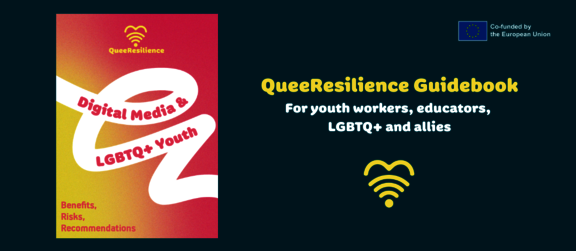Digital Media & LGBTQ+ Youth: Benefits, Risks, Recommendations

Project
How do queer youth use digital media? What risks do they face? What opportunities do digital spaces offer? And how can youth workers and educators support them?
The QueeResilience Guidebook explores these questions. It combines up-to-date research findings with insights from LGBTQ+ youth who participated in focus groups in Germany, Lithuania, Czechia, and Slovakia – complemented by perspectives from professionals in education, psychology, and community work.
The second, practice-oriented part of the guide offers concrete recommendations, methods, and tools for youth workers, but also for teachers, school social workers, and media educators.
Key topics include:
- The digital realities of queer youth
- Risks such as hate speech, cyberbullying, and digital overwhelm
- Opportunities for community-building, visibility, and empowerment
- Methods to foster resilience, media literacy, and self-efficacy
QueeResilience is co-funded by the European Commission's Erasmus+ programme and carried out in cooperation with partners in Lithuania, Czechia, and Slovakia. The project is coordinated by Stiftung Digitale Chancen.
![[Translate to EN:] Grafik mit der Aufschrift "Anti-Rumour Workshop-Module", darunter vier Symbole: eine Gruppe von Menschen in einer geöffneten Hand; eine Weltkugel, aus der eine Pflanze sprießt; Eine Pyramide mit einem Auge in der Mitte; verschiedene digitale Medien wie Laptop und Handy.](/fileadmin/_processed_/8/2/csm_AR_Workshopmodule_Titel_ee9873ecc9.png)







![[Translate to EN:] [Translate to EN:]](/fileadmin/digitale-chancen/images/projektteaser/teaser-project-cyberme.svg)
![[Translate to EN:] [Translate to EN:] DiKomBi Projekt presentation, CC0 by Toa Heftiba](/fileadmin/_processed_/4/f/csm_DiKomBi_Projekt_Foto_von_toa-heftiba_677x449_ddd04f3168.jpg)